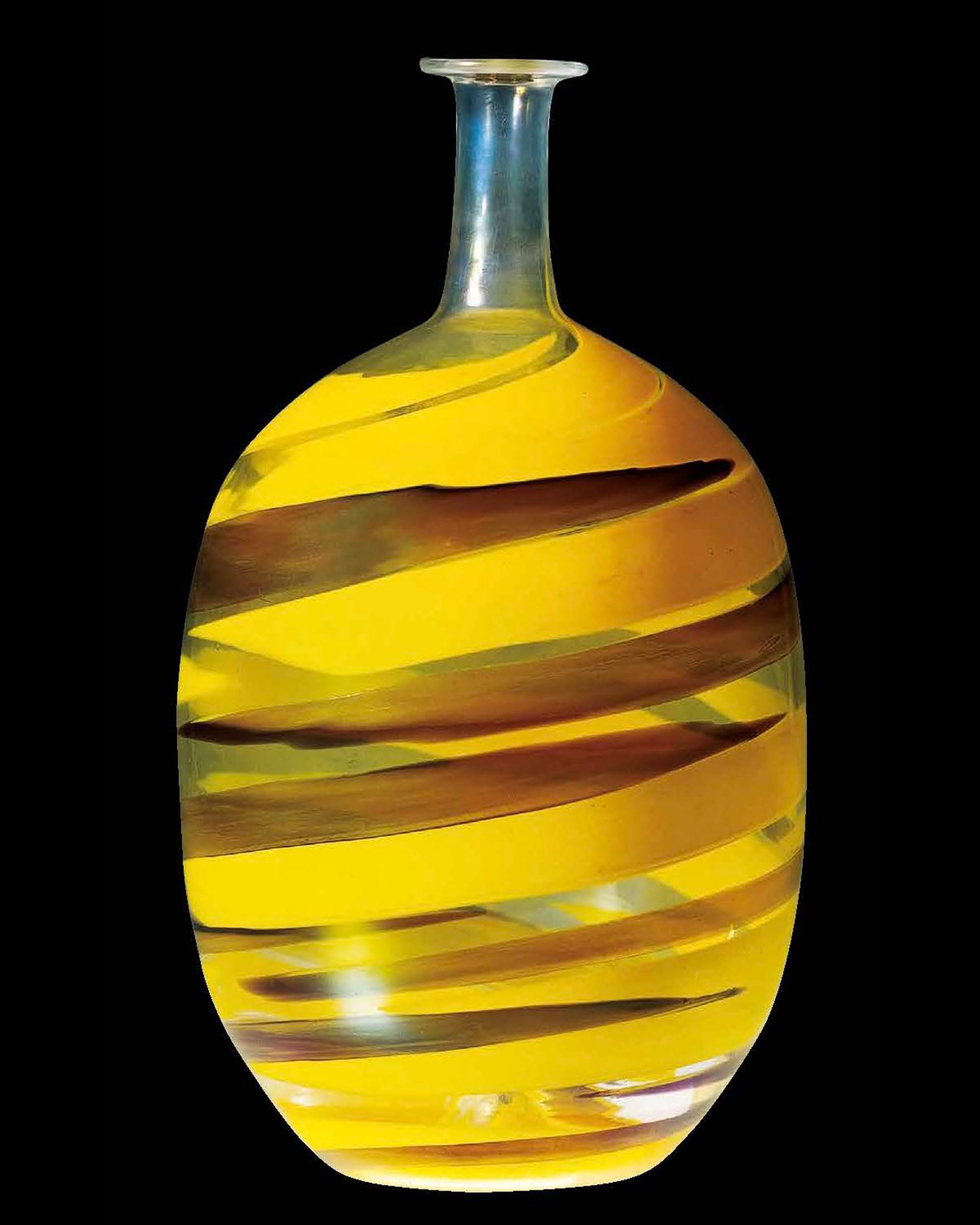
Daring Geometries in Murano
CARLO SCARPA: BREAKING THE MOLD
Marino BarovierThere was something new – geometric and audacious – in the glassware produced by Cappellin: one startling example was the spherical vase with a truncated-cone base shown at the 1928 Salon d’Automne in Paris. Gio Ponti certainly noticed it, and commented upon it in print – but he could certainly be forgiven for not knowing that the shift, that new approach to artistic glassblowing, was due to a young newcomer to the firm, barely twenty years old, named Carlo Scarpa. From that day on, and until he chose to devote himself exclusively to architecture when he turned forty, Scarpa created – first for Cappellin and later for Venini – a stunning succession of masterpieces in clear or opaque glass, gleaming or frosted, smooth or rough, milky or multicolored. Scarpa made use of all the techniques, some old, such as filigree or lattimo, developed by the master glassworkers of sixteenth-century Murano, and others more recent innovations, such as pulegoso glassware, in which glass was infused with air bubbles, becoming almost opaque.







